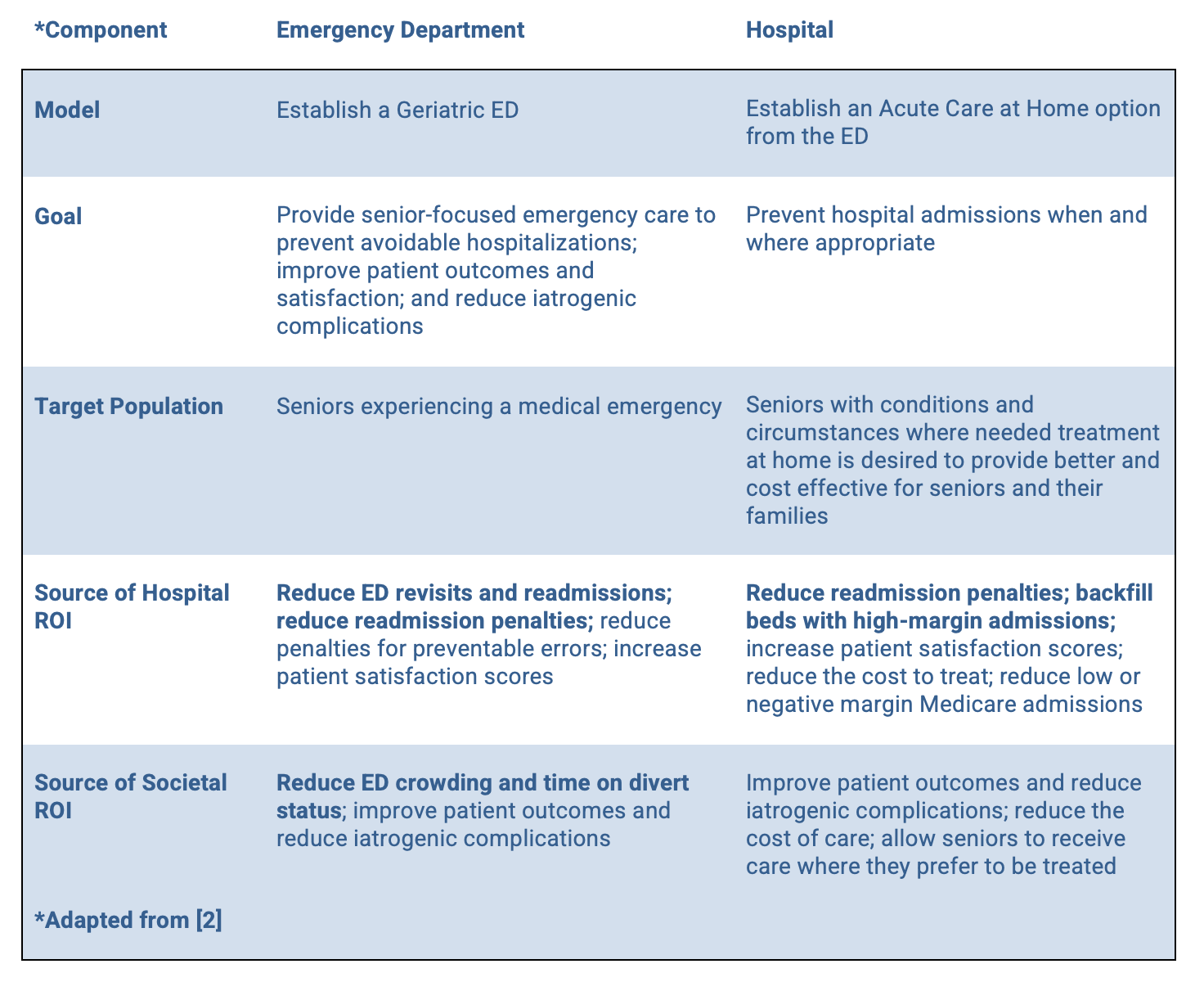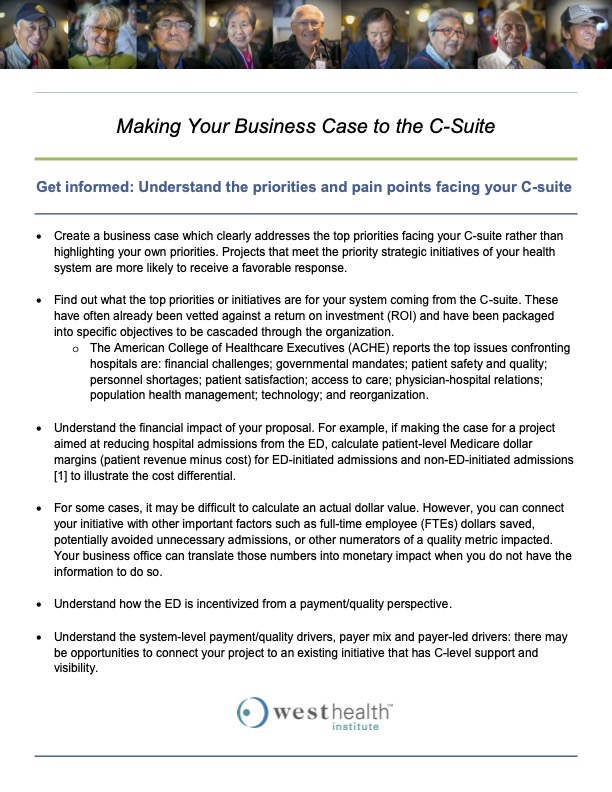Making your Business Case to the C-Suite
Understand the priorities and pain points facing your decision-makers
DownloadAddressing Your Health System’s Priorities
- Create a business case which clearly addresses the top priorities facing your C-suite rather than highlighting your own priorities. Projects that meet the priority strategic initiatives of your health system are more likely to receive a favorable response.
- Find out what the top priorities or initiatives are for your system coming from the C-suite. These have often already been vetted against a return on investment (ROI) and have been packaged into specific objectives to be cascaded through the organization.
- The American College of Healthcare Executives (ACHE) reports the top issues confronting hospitals are: financial challenges; governmental mandates; patient safety and quality; personnel shortages; patient satisfaction; access to care; physician-hospital relations; population health management; technology; and reorganization.
- Understand the financial impact of your proposal. For example, if making the case for a project aimed at reducing hospital admissions from the ED, calculate patient-level Medicare dollar margins (patient revenue minus cost) for ED-initiated admissions and non-ED-initiated admissions [1] to illustrate the cost differential.
- For some cases, it may be difficult to calculate an actual dollar value. However, you can connect your initiative with other important factors such as full-time employee (FTEs) dollars saved, potentially avoided unnecessary admissions, or other numerators of a quality metric impacted. Your business office can translate those numbers into monetary impact when you do not have the information to do so.
- Understand how the ED is incentivized from a payment/quality perspective.
- Understand the system-level payment/quality drivers, payer mix and payer-led drivers: there may be opportunities to connect your project to an existing initiative that has C-level support and visibility.
Develop Your Project’s “Elevator Pitch” to the C-Suite in Language They Will Easily Understand
You may have limited time to describe your proposal to your C-suite. Be prepared to present your ideas in a quick and simple format that highlights the sources of ROI and how it directly links to the top priorities for your hospital—priorities the C-suite cares about. This can be a concise “elevator pitch” and/or a visual (such as the table below, which illustrates how two projects (models) can support a goal of reducing readmission penalties.)

Document the Details of the Project to Support Decision-Making
A more complete business case will include the following components:
- Brief, executive summary describing the key points of the project, including the need
- Introduction and rationale describing the objectives, predicted outcomes and benefits tied to C-suite’s priorities
- Describe how outcomes will be measured and reported
- A section should provide cost details related to the expenses associated with setting up, assessing, maintaining and ultimately sustaining the program. This section should also describe the expected financial ROI of the program.
- It’s important to be transparent about what your project will cost in terms of FTEs, equipment, or loss of efficiency in other areas. Any unrealistic or non-transparent information will reduce the credibility of the proposal.
- Include a section that describes the timeline and resources for implementing the program.
References
[1] McHugh, et al, 2008
[2] Siu, et al, 2009
Compiled by:

